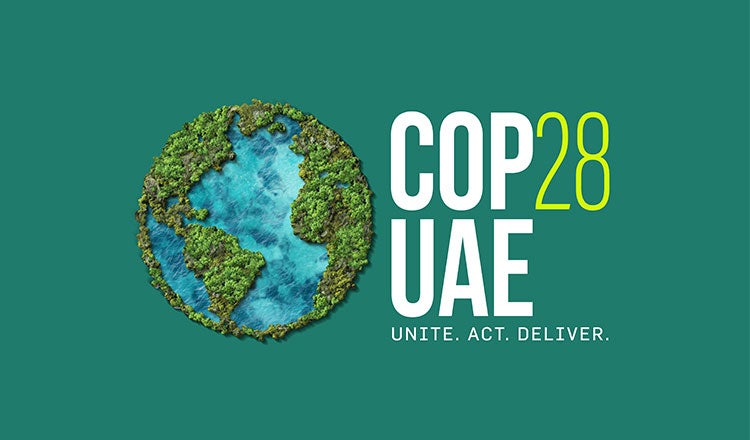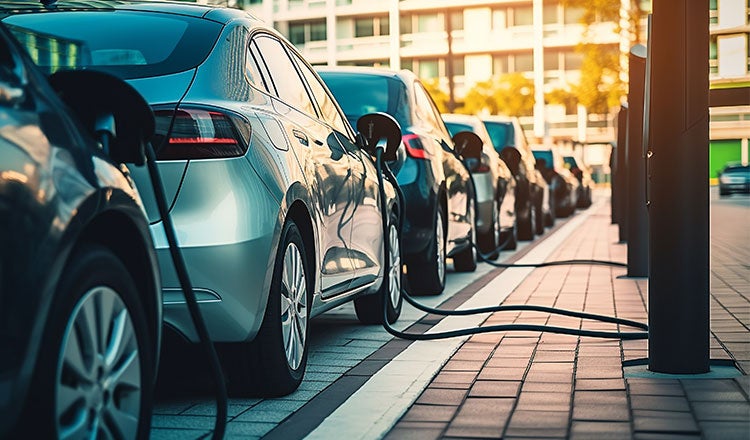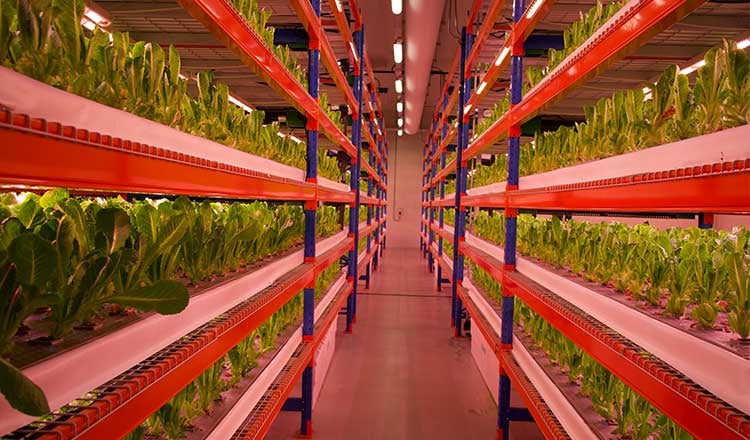
The View From COP28: Our Key Highlights
Expo City in Dubai, United Arab Emirates, hosted COP28 Nov. 30-Dec. 12, 2023, and we were excited to attend the much–anticipated global United Nations climate summit on behalf of HDR. Featuring a jam–packed agenda and a record 100,000 participants, this was a fantastic opportunity for knowledge sharing and collaboration on meaningful action on our collective journey to net zero. Here, we compile our highlights and reflections from a hugely insightful, thought provoking and eye–opening conference.

Cop28 delivered the inaugural Global Stocktake, whereby policymakers evaluate the progress made so far on climate action, identify gaps and set out the next steps in line with the objectives of the Paris Agreement. This is crucial as, according to the Global Tipping Points Report, the planet is close to crossing five ‘tipping points’ of irreversible damage. We can still prevent this if we take urgent action, however, sadly there is little time to waste. As King Charles III so effectively said in his speech at COP28: “In 2050 our grandchildren won’t be asking what we said, they will be living with the consequences of what we did or didn’t do.” This heart–rending sentiment was echoed across the sessions.
It was therefore encouraging to see some truly game-changing developments emerge from COP28, and the one that stood out the most was the UAE Consensus, with over 190 countries finally agreeing to shift away from fossil fuels, as well as triple the world’s renewable energy capacity by 2030. The transition to clean energy was a theme that dominated COP28, and nuclear energy formed a large part of the renewable energy discussion as an increasingly vital solution. Especially so given the tragic geopolitical instabilities of the last couple of years, which made the drive for energy security stronger than ever in some parts of the world.
December 6th was dedicated to ‘multilevel action, urbanization and built environment/transport’ with sessions focusing on decarbonizing the built environment and building climate–resilient infrastructure. The need to climate–proof healthcare facilities was a big highlight, as it is one of the most carbon-intensive industries. Not just operationally, through materials choices and digitally–enabled energy efficiency measures (internet of things and smart sensors) yet also in terms of supply chains. Renewable energy cropped up as a solution once more.
Coinciding with “Built Environment Day”, the Buildings Breakthrough initiative was launched in partnership with the UN Environment Programme, aiming to strengthen collaboration internationally to achieve near–zero emissions, resilient buildings by 2030. There was also a climate-focused investment fund, Alterra, set up by the UAE, pledging $30 billion for positive impact.
Another discussion focused on the decarbonization of heavy road freight and the challenges of developing adequate infrastructure and grid capacity to support these current transportation methods (consider that, to charge a 40 ft electric vehicle would take approximately 145 houses’ worth of power). We also spoke about training drivers and employees in optimum vehicle handling methods, as the manner of driving can affect the efficiency of the vehicle too. In terms of our work, we are currently working on a large-scale sustainability focused tourism project in the Kingdom of Saudi Arabia. One of the proposals includes multiple innovative practices such as sustainable stormwater management systems which would have minimal impact on the surrounding pristine natural environment, distribution centres catering primarily to an EV mobility fleet and facilities to manage and charge; as well as maintaining vast EV fleets. During COP28, we observed a profound alignment between the design solutions that we are seeking to advocate and the broader ethos of sustainable living. Our ongoing projects resonate deeply with the collective vision for a more sustainable future, ensuring a legacy that benefits generations to come.

When discussing materials, concrete and cement are the biggest polluters, and one session explored alternative solutions such as using insulated prefabricated panels for walls and roofing instead; an approach that we have been implementing. This year’s conference witnessed the launch of the Cement and Concrete Breakthrough, with the goal of accelerating investments in the policies, tools and technologies to help the industry achieve net zero by 2050.
Another fascinating session was on the Blueprint for a circular, water–smart Society, an innovative approach from the Netherlands that seeks to cut water usage and wastewater emissions by 20–45% in urban areas, by harnessing circular solutions to reuse, clean and recycle water. The circularity of water is a particularly interesting concept for us, having delivered Bustanica, the largest indoor vertical hydroponic farm in the world. Located in Dubai, Bustanica has an on–site water treatment provision and, overall, can reduce water use by 90% compared with traditional agricultural methods. Just imagine the amazing possibilities if water circularity is efficiently introduced into homes.

COP28 provides a unique platform for diverse voices to come together. We were inspired by many great exhibitions, new innovations (including a prototype of a flying taxi), and best practices being shared, all of which will impact how we design and deliver buildings. There was a general consensus across the sessions that, apart from educating consultants and designers, this global forum allows for conversations to encourage action at government level to make a real difference and break down barriers to access net-zero solutions for the public; through financial incentives, subsidies or other measures. The main message remains all about collaboration, at industry and government level globally, to drive tangible results and create a greener future for all.





